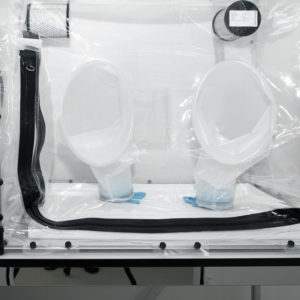Beschreibung
a-Learning: Highly Potent Substances: Introduction and Legal Basis
Current trends for dealing with highly potent (or highly active) substances:
- Specific legislation in most countries, with similar methodology worldwide
- Employer responsibility to ensure necessary measures for health and safety protection
- Evaluation of unavoidable risks
- Identification and classification of hazardous materials used in the workplace
Many of today’s new substances are designed to be a perfect fit for a specific type of receptor. Even tiny doses exhibit strong, selective therapeutic activity. Such substances are known in technical usage as high-potent (or highly active) substances.
The level of awareness for operator health protection and environmental, health & safety (EHS) requirements in general has strongly increased. In addition, pharmaceutical legislation has tightened GMP requirements concerning highly potent substances substantially.
These trends were incorporated into the second edition of the ISPE Good Practice Guide „Containment for Potent Compounds“. One of the handbook’s contributors, Dr. Rainer Nicolai, Product Owner Engineering Consulting at F. Hoffmann-La Roche AG in Basel, is also the author of this e-learning module.
When dealing with highly potent substances, keep in mind the following fundamentals:
- If any hazardous materials exists in a plant, there is always exposure.
- There is no such thing as a closed system. (A closed system is a sure sign of an inadequate analytical method.)
- With ever improving analytical methods, everything is everywhere.
- Exposure is neither good nor bad – it is always a question of how high the exposure is.
- Exposure is inevitable, overexposure can be avoided.
- There is a safe dose of everything.
Content
- The content is structured in alignment with chapter 2 of the containment handbook.
- Definition of highly potent substances
- Routes of exposure
- Occupational exposure limits
- Terms, abbreviations, definitions
Outline
- Containment Fundamentals
- Regulatory requirements
- Exposure levels
- Risk assement
Audience
- Employees who operate in containment environments
- Planners and engineers who design production facilities requiring containment
Features
- This e-learning module is an adaptive module and requires you to self-assess your knowledge and level of confidence during completion. Several of the members of the ISPE DACH CoP Containment Steering Committee have reviewed this module and contributed valuable input. You will receive a certificate on completion of the module.
Industries
- Suppliers of equipment for the production of active ingredients API
- Supplierd of equipment for the production of clinical samples and laboratory buildings
- Suppliers of equipment for the production of Oral Solid Dosage Forms OSD
- as well as manufacturers of solid, semi-solid or liquid sterile or non-sterile dosage forms
- Logistics
- Subcontractor
Individual solution
This adaptive learning module can also be customized by our learning engineer team for your company with your internal information (e.g. contact details), content (e.g. organizational charts, schedules, forms, leaflets) and your corporate identity. Feel free to contact us!
License
Single license with a 60 day term.



